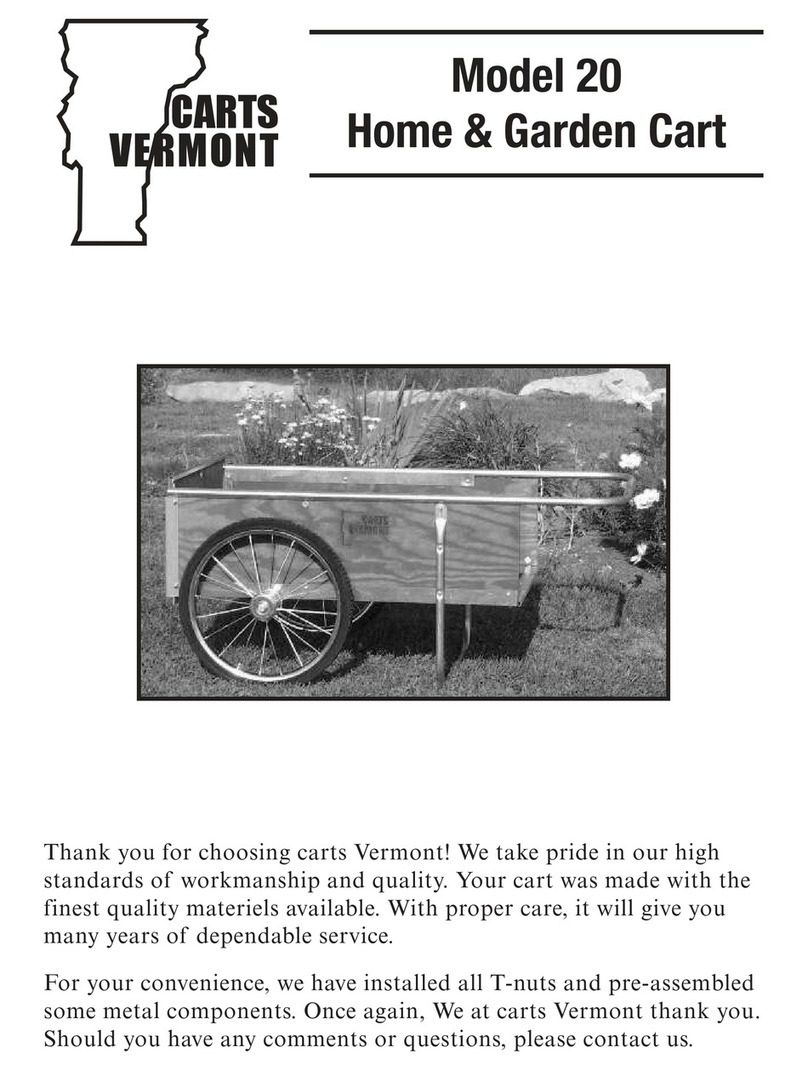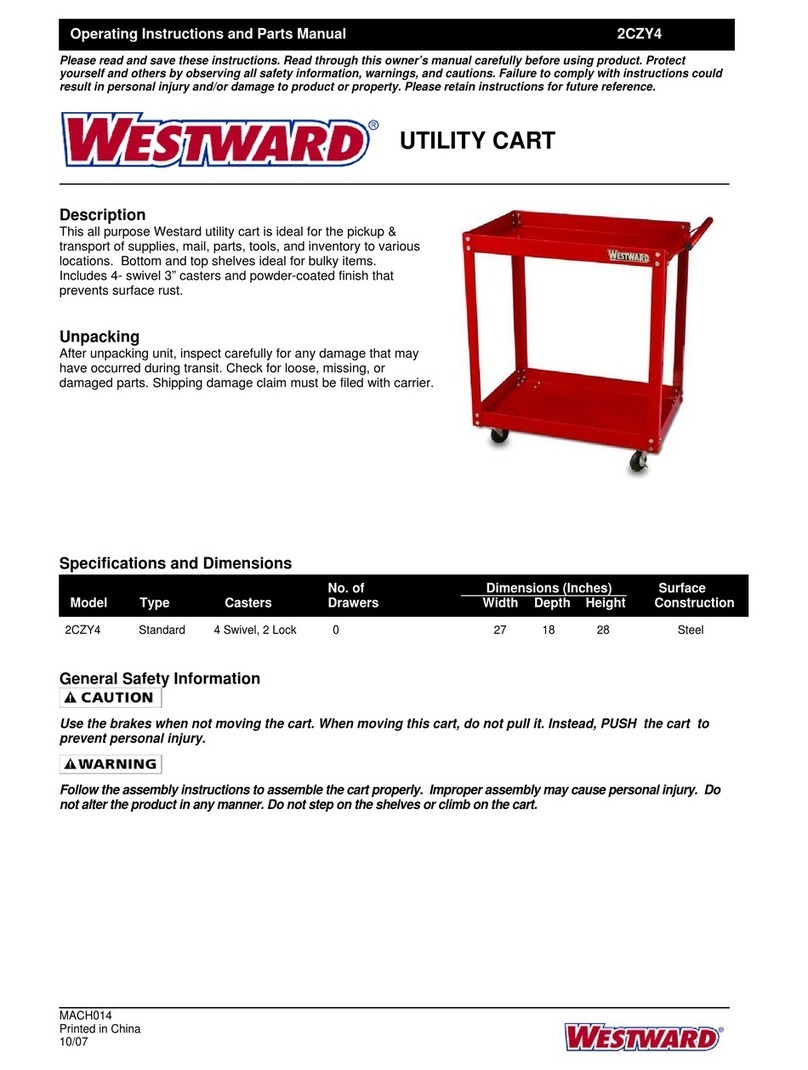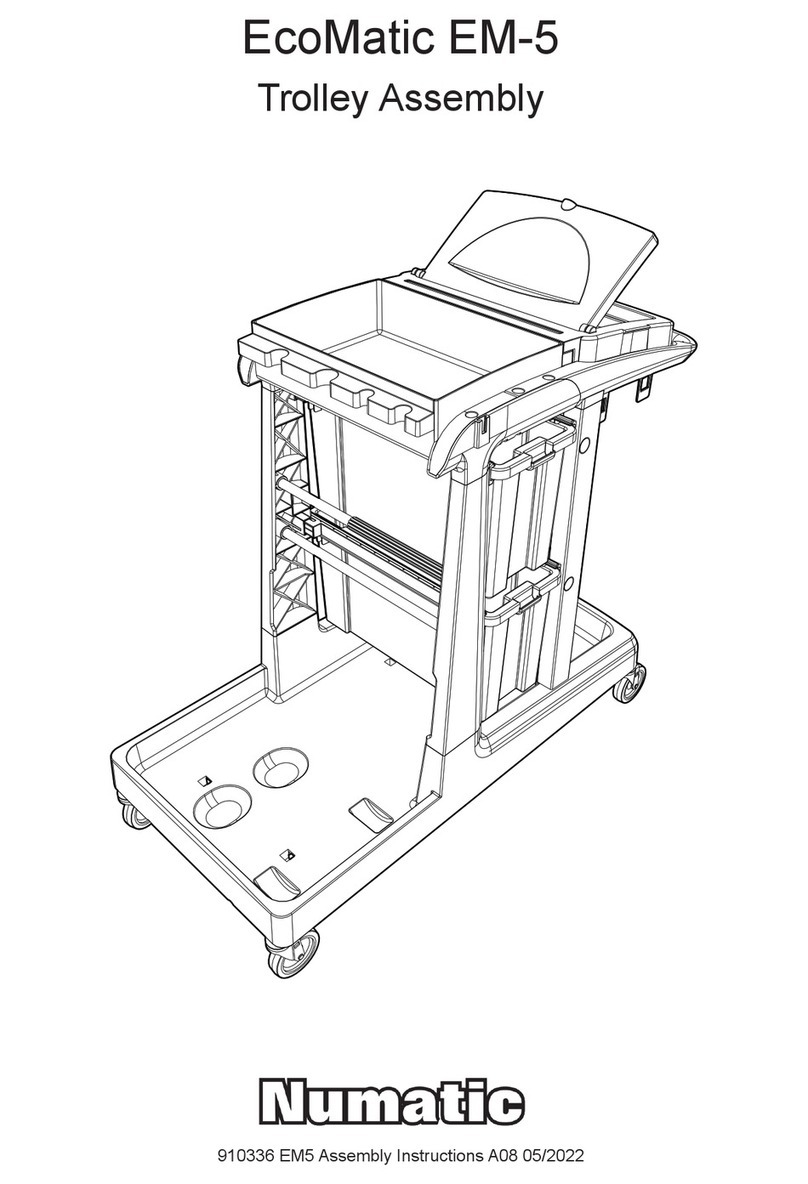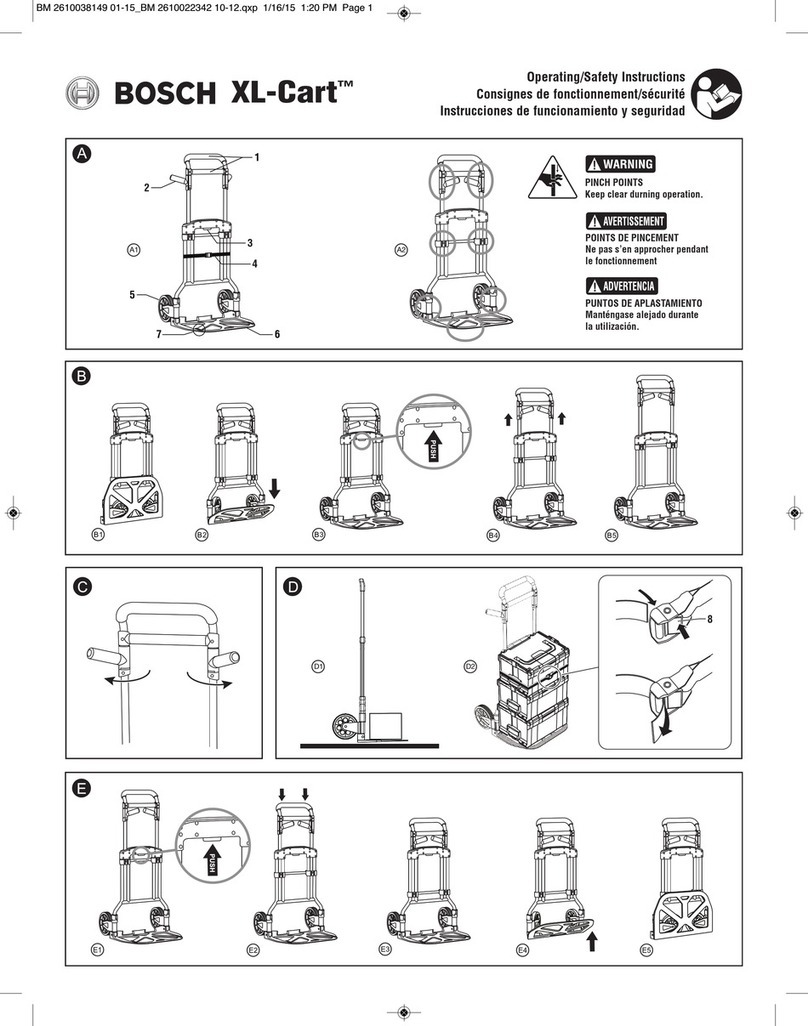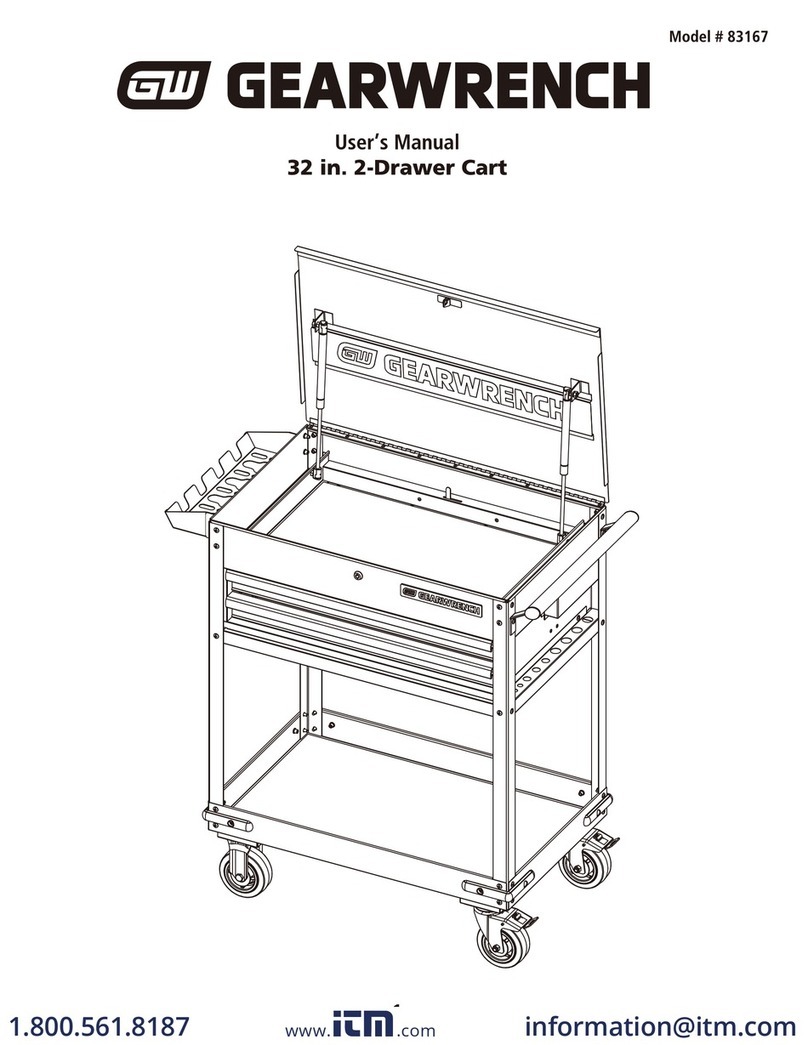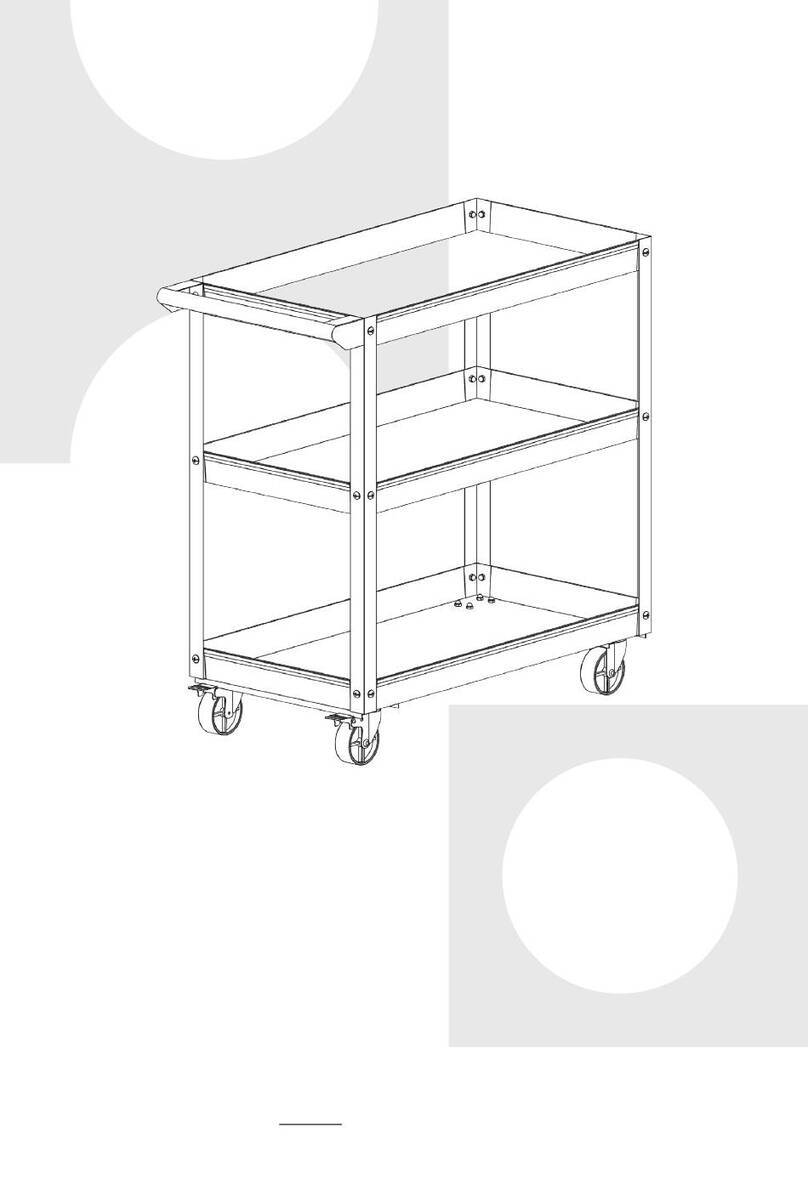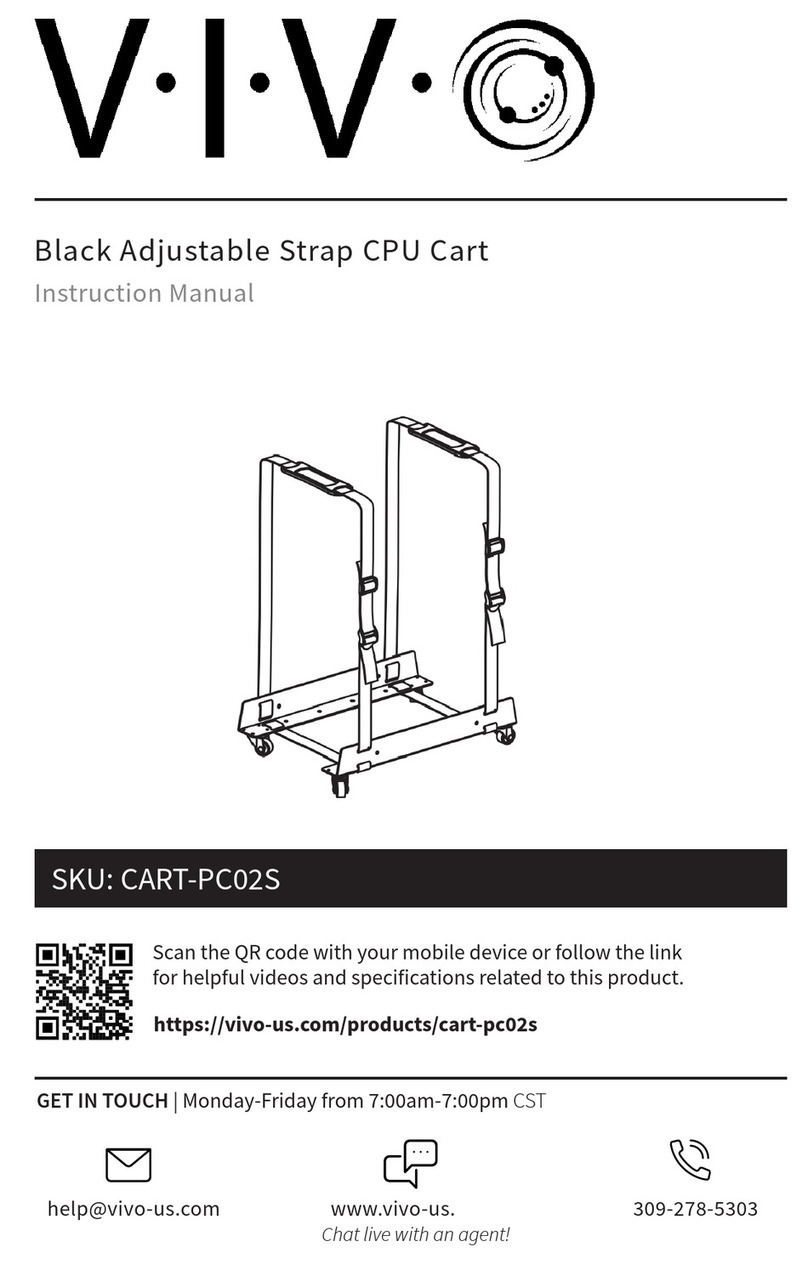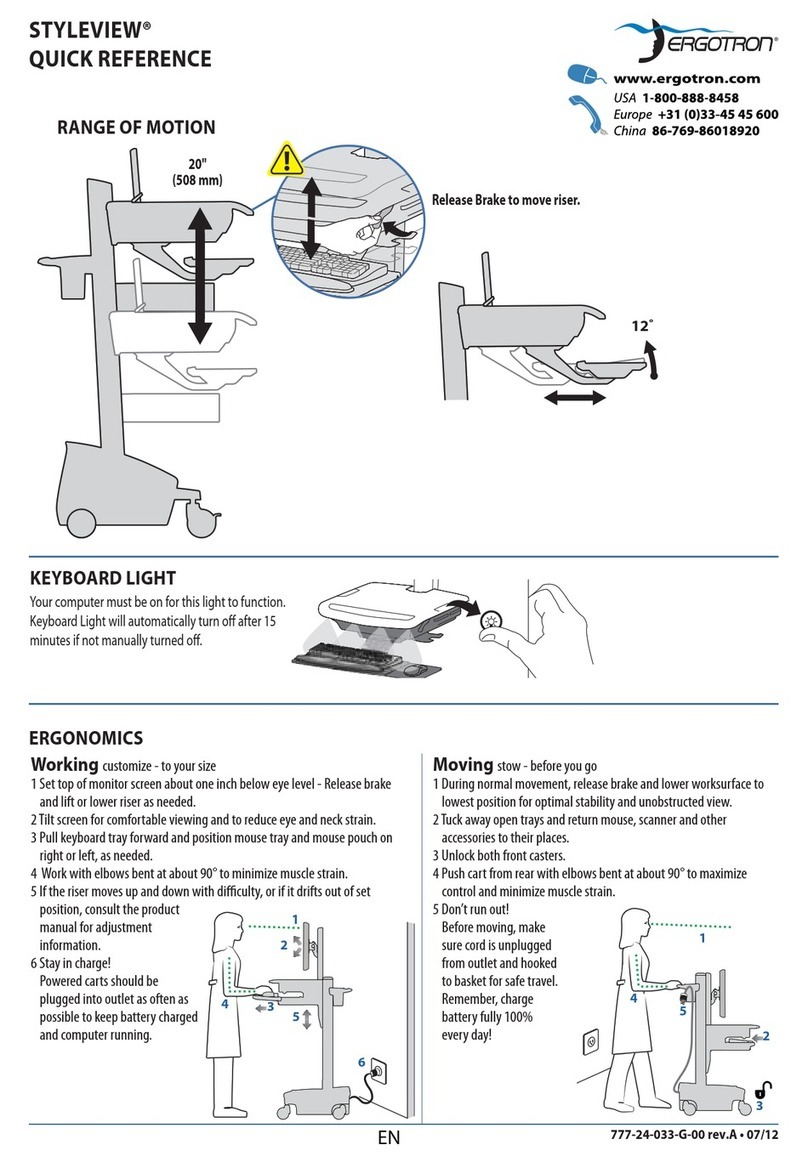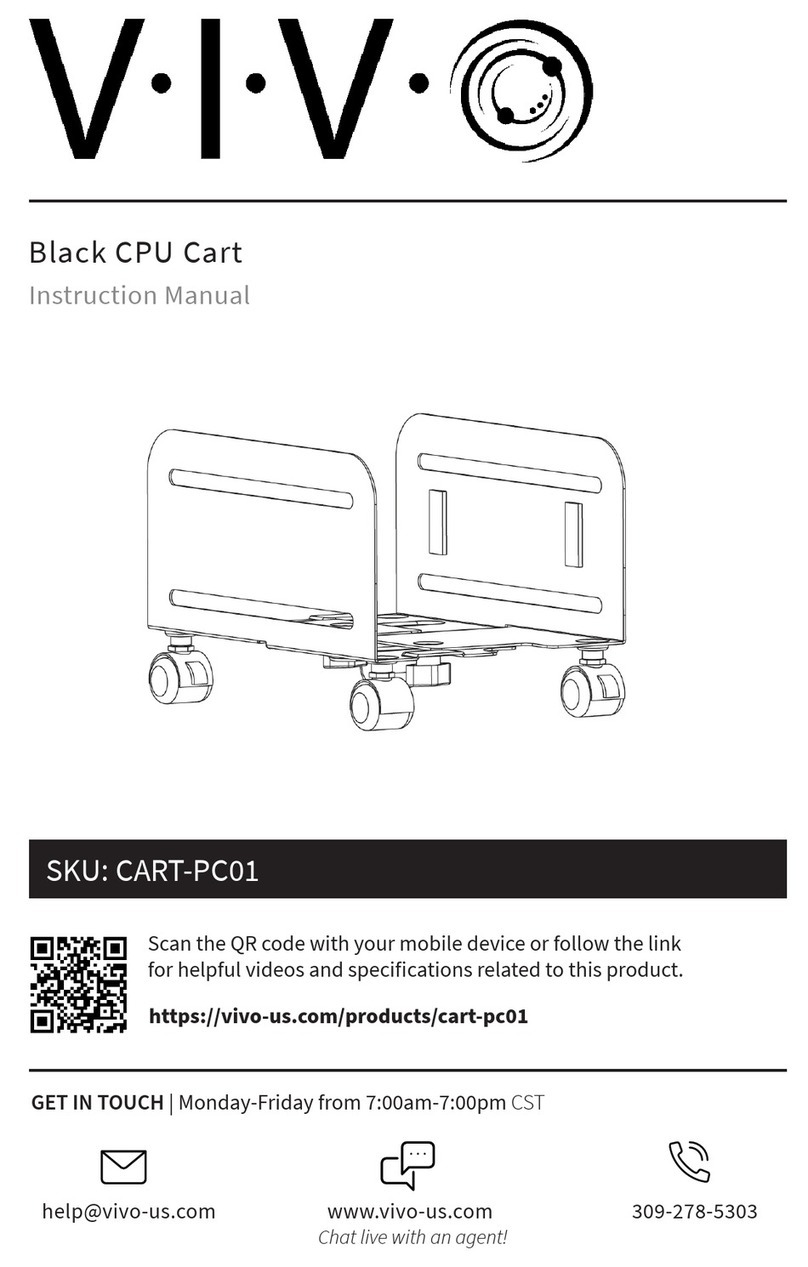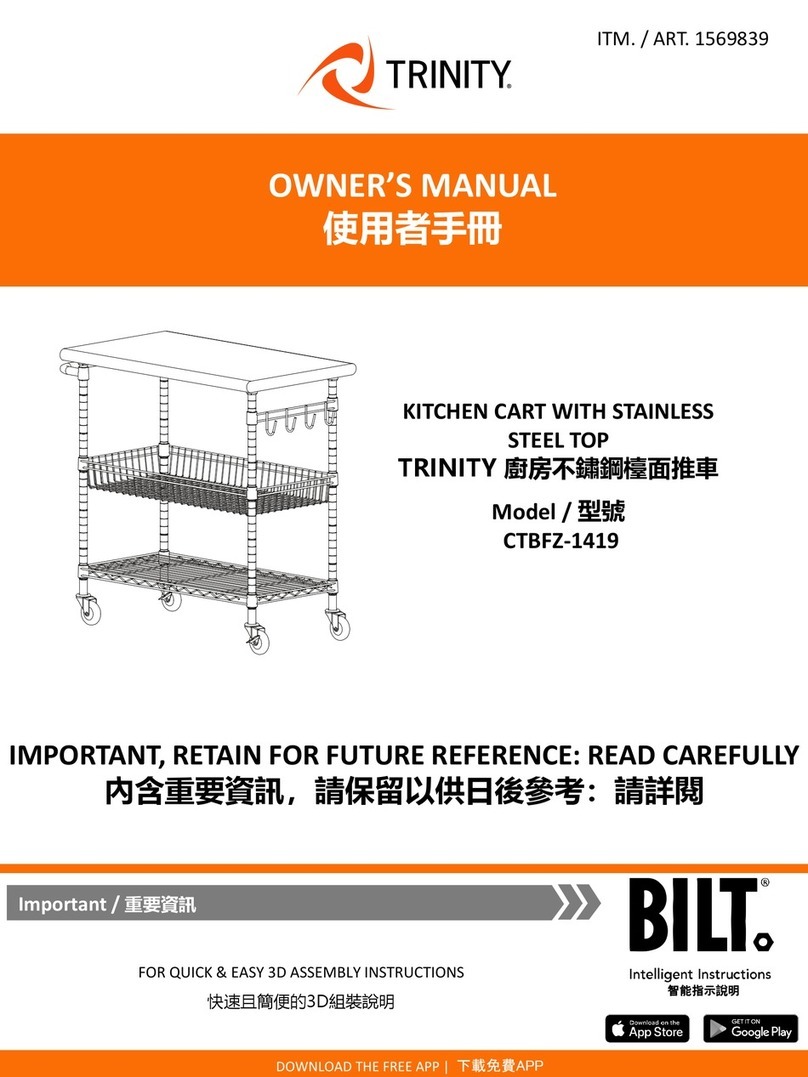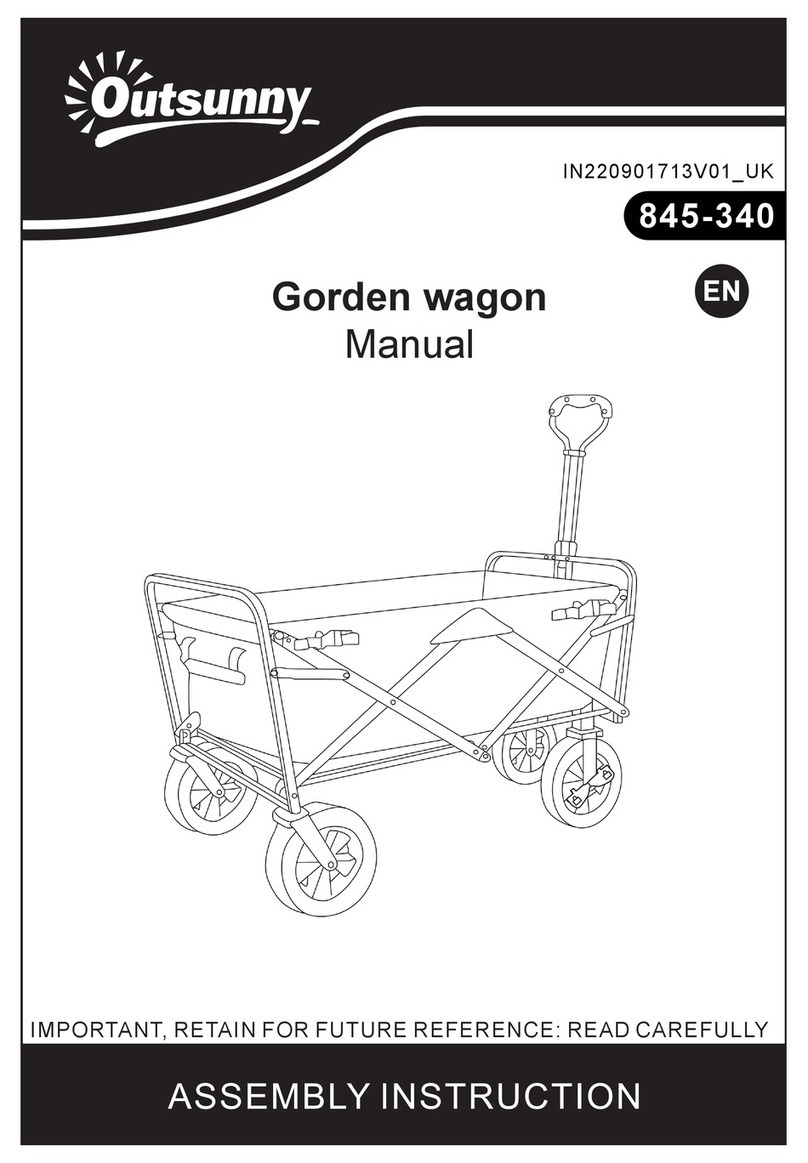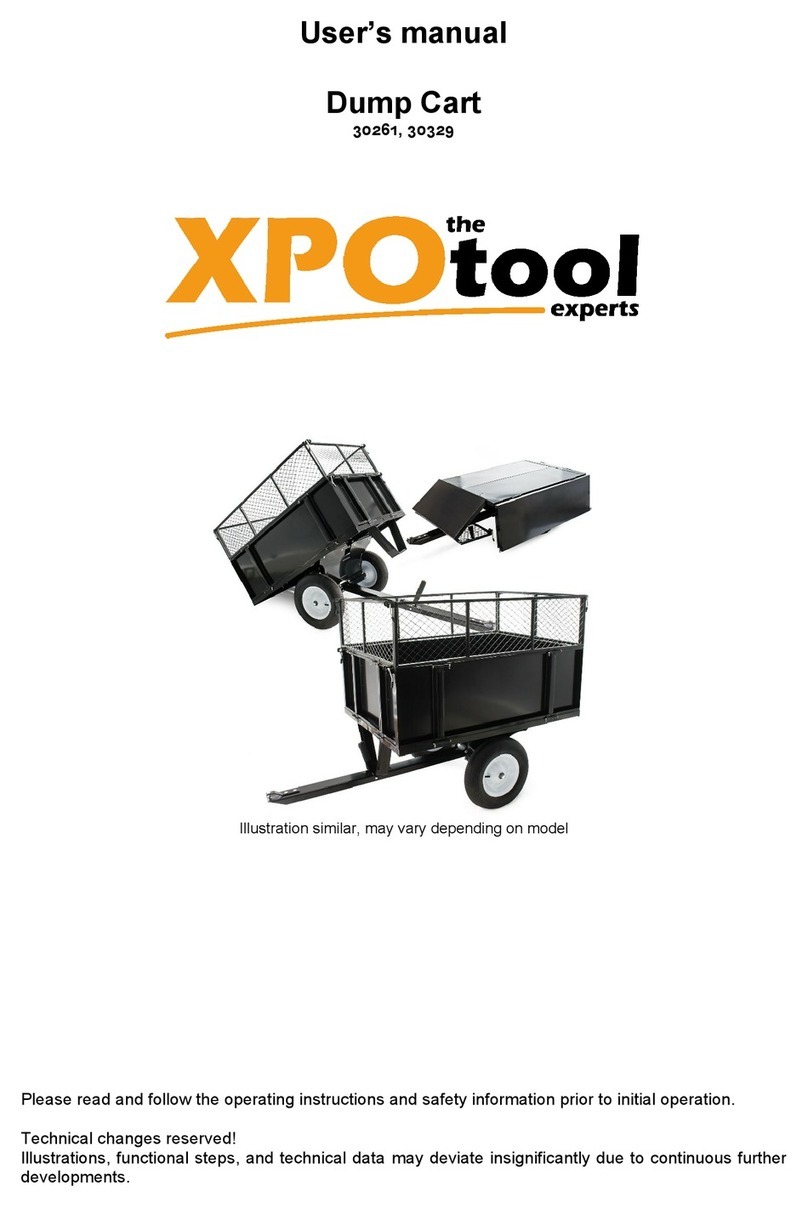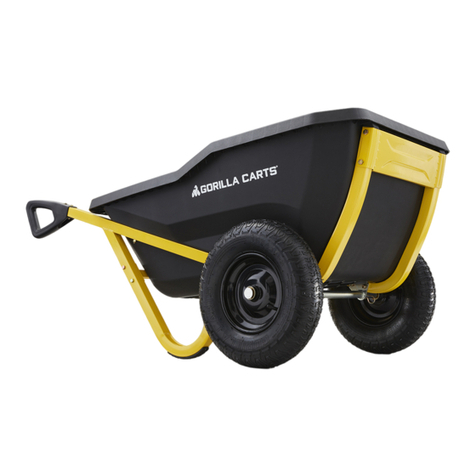
Do not carry more than 45kg of luggage
when cycling. Keep Centre of gravity
lower than 0.6m, and as far back
as possible, though not behind the
compression arm. Cycle slower as you
carry more. Make sure your load is secure,
and that nothing can catch in the wheels
Adjust tyre pressures to match the load,
higher pressures for heavier loads.
Your loads should be under 1.2m wide.
Never use the trailer to carry live cargo.
It is easy to forget you are towing a trailer.
A heavy trailer takes longer than normal to
stop. Trailers turns tighter than the bike.
Stop if you hear an unusual noise, or
notice a sudden change in handling.
Practice with an empty trailer away from
traf c until you are comfortable using it.
Make sure the trailer is correctly hitched,
loaded, and assembled. Check your
brakes are in good working order. Once
cycling check your braking distance, for
trailer weight, and road conditions. Make
sure your hitch is secure.
The trailer handle can be adjusted down
or up so the trailer frame remains level, for
differnet wheels sizes and trailer weights.
A trailer with a full bag
A box supported by an empty bag
Wind the handcuffs to change the
handle angle relative to the frame
A suitcase strapped on top of a full
bag. It can be big enough for a bike
Handle up, and handle down.
